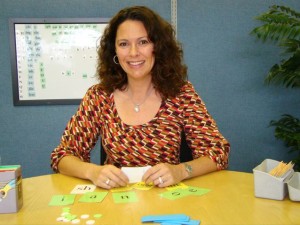
by PRIDE Reading Program Admin | Apr 26, 2016 | News & Events, Summer Programs
PRIDE Learning Center announces the opening of its seasonal location in Pasadena, California. PRIDE Learning Center Pasadena will be the eighth summer location opening this year for PRIDE.
PRIDE Learning Center, which specializes in tutoring students with learning disabilities and special needs, will provide instruction this summer at a Seasonal Learning Center in Pasadena, located at 1434 N. Altadena Drive.
Summer instruction for children at PRIDE Learning Center Pasadena will be available 9:00am – 12:00pm Monday – Friday from June – August.
This summer program at PRIDE Learning Center Pasadena is designed for children of all ages who are struggling with reading, writing and comprehension due to the diagnosis of dyslexia, auditory and visual processing disorder, autism, speech delays and other learning difficulties. The PRIDE Learning Center program is based on Orton-Gillingham research, which uses the multisensory elements of seeing, hearing, touching and moving.
“The Pasadena Learning Center is an extension of our Orange County Learning Centers which allows more families in the Pasadena community to get the help they need for their children,” states Karina Richland owner of PRIDE Learning Centers. “Our goal at PRIDE, as it has been at all of our locations, is to deliver the highest level of instruction possible and help every child out there, even those that many teachers have given up on.”
“PRIDE Learning Center has helped so many students learn how to read,” says May Dabbah, director of the Pasadena Seasonal Learning Center. “I see students improve dramatically in just one summer. I am so excited for the Pasadena community to experience and be a part of our wonderful program.”
Individuals interested in the PRIDE Learning Center Pasadena summer instruction can call (866) 774-3342 or email info@pridelearningcenter.com

by PRIDE Reading Program Admin | Apr 20, 2016 | A PRIDE Post, Articles & Resources
Yes! A child can overcome reading problems if they are identified early and provided with the correct reading intervention program.
If your child is having troubles learning to read, take immediate action. Research in the field of reading says that the ideal window of opportunity for helping kids with reading problems is from the beginning of kindergarten to the end of first grade. This is still called intervention. After this window of opportunity has passed it is called remediation. Keep in mind that prevention is always easier than remediation.
The three key research conclusions from the National Institutes of Health are:
- 90% of children with reading problems will achieve grade level in reading if they receive help by the first grade.
- 75% of children whose help is delayed to age nine or later continue to struggle throughout their school careers.
- If help is given in fourth grade, rather than in late kindergarten, it takes four times as long to improve the same skills by the same amount.
Dr. G. Reid Lyon, Chief of the Child Development and Behavior Branch of the National Institute of Child Health and Human Development of the National Institutes of Health concluded that if children are identified early and provided with systematic, explicit, and intensive instruction in phonemic awareness, phonics, reading fluency, vocabulary, and reading comprehension strategies they can overcome their reading problems.
The type of intervention program a child uses is also crucial. On the basis of a thorough evidence-based review of the reading research that met rigorous scientific standards, the National Reading Panel (NRP), convened by the NICHD and the Department of Education, found that instructional programs that provide systematic instruction in phonemic awareness, phonics, guided repeated reading to improve reading fluency, and direct instruction in vocabulary and reading comprehension strategies were significantly more effective than approaches that were less explicit and less focused on the reading skills to be taught (e.g., approaches that emphasize incidental learning of basic reading skills).
Learn more about the New PRIDE Reading Program
______________________________________________________________________
Karina Richland, M.A. is the Founder of PRIDE Learning Centers, located in Southern California. Ms. Richland is a certified reading and learning disability specialist. Ms. Richland speaks frequently to parents, teachers, and professionals on learning differences, and writes for several journals and publications. You can visit the PRIDE Learning Center website at: www.pridelearningcenter.com

by PRIDE Reading Program Admin | Apr 10, 2016 | A PRIDE Post, Auditory Processing Disorder
Students with Auditory Processing Disorder (APD) have significant difficulties in identifying and discriminating sounds despite having normal peripheral hearing. These students often have reading difficulties due to significantly poor phonological awareness, decoding ability and grapheme knowledge. Time and again a student with Auditory Processing Disorder will lack the necessary reading foundation skills that are essential in becoming a strong reader.
Early Intervention
Diagnosis is the essential first and most important step in successfully teaching a student with Auditory Processing to read. The sooner a child with Auditory Processing Disorder is given proper reading interventions, particularly in the very early grades, the more likely it is that they will have fewer or milder difficulties in reading later in life. A child with Auditory Processing that is not identified until the third grade or later is already years behind his or her classmates. The entire reading foundation needs to be taught at this point. This is a gap that must be closed if the child is ever to catch up with his peers. The best intervention is prevention in kindergarten or remediation beginning in the first grade.
Intensive Reading Instruction
For the child diagnosed with Auditory Processing Disorder that is already behind his peers in reading, intervention will need to be delivered with great intensity. Keep in mind that this child is behind his classmates and must make more progress if he is to ever catch up. The rest of the class does not stand still to wait, they continue forward. Taking a few lessons once or twice a week will never give the student with Auditory Processing the opportunity to catch up. He must make a giant leap; if not, he will always remain behind.
A child with Auditory Processing Disorder who is not identified early may require as much as 150 to 300 hours of intensive instruction if he is ever going to close the reading gap between himself and his peers. The longer identification and effective reading instruction are delayed, the longer the child will need to catch up. In general, it takes 100 hours of intensive instruction to progress one year in reading level. The sooner this remediation is completed, the sooner the child can progress forward with his peers.
High Quality Reading Instruction
Teaching a child with Auditory Processing how to read needs to be provided by a highly qualified teacher. A teacher’s knowledge of how children learn to read as well as her experience teaching a specific program will ultimately determine the success of the child. These students will need a very structured, systematic, cumulative, repetitive and multisensory teaching method such as the Orton-Gillingham approach. By using a multisensory approach the student will be able to learn using the visual and kinesthetic modalities while simultaneously strengthening the auditory channels.
In Orton-Gillingham, the phonemes are introduced in a systematic, sequential and cumulative process. The Orton-Gillingham teacher begins with the most basic elements of the English language. Using repetition and the sequential building blocks of our language, phonemes are taught one at a time. This includes the consonants and sounds of the consonants. By presenting one rule at a time and practicing it until the student can apply it with automaticity and fluency, students with Auditory Processing Disorder have no reading gaps in their word-decoding skills. As the students progress to short vowels, they begin reading and writing sounds in isolation. From there they progress to digraphs, blends and diphthongs.
Students with Auditory Processing are taught how to listen to words or syllables and break them into individual phonemes. They also take individual sounds and blend them into a word, change the sounds in the words, delete sounds, and compare sounds. For example, “…in the word steak, what is the first sound you hear? What is the vowel combination you hear? What is the last sound you hear? Students are also taught to recognize and manipulate these sounds. “…what sound does the ‘ea’ make in the word steak? Say steak. Say steak again but instead of the ‘st’ say ‘br.’- BREAK!
Every lesson the student learns is in a structured and orderly fashion. The student is taught a skill and doesn’t progress to the next skill until the current lesson is mastered. As students learn new material, they continue to review old material until it is stored into the student’s long-term memory. While learning these skills, students focus on phonemic awareness. There are 181 phonemes or rules in Orton-Gillingham for students to learn. Advanced students will study the rules of English language, syllable patterns, and how to use roots, prefixes, and suffixes to study words. By teaching how to combine the individual letters or sounds and put them together to form words and how to break longer words into smaller pieces, both synthetic and analytic phonics are taught throughout the entire Orton-Gillingham program.
Students with Auditory Processing Disorder need more structure, repetition and differentiation in their reading instruction. They need to learn basic language sounds and the letters that make them, starting from the very beginning and moving forward in a gradual step by step process. This needs to be delivered in a systematic, sequential and cumulative approach. For all of this to “stick” the students will need to do this by using their eyes, ears, voices, and hands.
Learn more about the New PRIDE Reading Program
_________________________________________________________________________________________________

Karina Richland, M.A. is the Founder of PRIDE Learning Centers, located in Los Angeles and Orange County. Ms. Richland is a certified reading and learning disability specialist. You can visit the PRIDE Learning Center website at: www.pridelearningcenter.com

by PRIDE Reading Program Admin | Apr 10, 2016 | A PRIDE Post, Reading Comprehension
Many students with Learning Disabilities process information differently. They may be unaware of simple reading comprehension strategies that strong readers use automatically, such as rereading passages they do not understand.
Students with learning disabilities typically recall less about stories they have read and cannot easily identify the important information in them. Here are a few reading comprehension strategies that can be used either at home or in the classroom to help students with learning disabilities comprehend and understand text.
Retelling
Retelling is a frequently used process that involves asking students to recall and restate the events in a story after they have read it or heard it. Teachers or parents should first model the different parts of the story for the student. For example, starting a story by saying “once upon a time,” and then prompting the student to retell the story by asking:
- Who is the story about?
- Where does the story take place?
- What is the main character’s problem?
- How does the main character try to solve the problem?
- How does the story end?
Theme Scheme
The use of a theme scheme during explicit instruction in reading comprehension will help students transfer the strategies they learn to novel texts. The Theme Scheme includes the following steps:
- Introduction and pre-reading discussion: The teacher defines the concept of THEME and introduces the background of the specific story for that lesson.
- Reading the story: The teacher reads the story aloud, stopping to ask questions designed to encourage the student to process the theme.
- Discussion: The teacher and student discuss the following questions:
- Who is the main character?
- What is the main character’s problem?
- What did the main character do about the problem?
- What happened next?
- Was that good or bad?
- Why was it good or bad?
- The main character learner that her or she should _____________.
- Apply the theme to other story examples and to real life experiences: The teacher introduces another story that provides another instance of the same theme. The teacher and student discuss the example using the above 7 questions plus:
- When is it important to ________?
- In what situation is it easy/difficult to ________?
- Review: The teacher reviews the above questions and asks the student to think about other examples.
A follow up activity: The teacher leads a follow-up enrichment activity, such as writing, drawing, discussion, or role- playing.
Predicting
In this activity, the teacher reads a story to the student or has them read the story aloud. The teacher stops the reader before getting to the story’s resolution. Then the teacher asks the student to predict what comes next in the unfinished story. Another option is that the teacher can provide a list of possible endings from which the student can choose.
Cloze Activity
The teacher removes a portion of text from the middle of a story and then has students fill in the missing information. To optimize the benefits of this approach, it is valuable to discuss the types of information that would be anticipated. For example, the teacher might remove the description of the problem faced by the characters in the story. The teacher then could show the student a story map and then ask the student what aspect of the map is not obvious in the story. The student can brainstorm possible problems that would make sense, given the other information presented in the story.
The above strategies are designed to enhance reading comprehension and have been used to teach students with learning disabilities, with promising results. Students struggling with reading comprehension can achieve gains, including the ability to transfer what they have learned to novel texts, when they are given highly structured and explicit instruction in reading comprehension.
Learn more about the New PRIDE Reading Program
________________________________________________________________________
Karina Richland, M.A. is the Founder of PRIDE Learning Centers, located in Los Angeles and Orange County. Ms. Richland is a certified reading and learning disability specialist. Ms. Richland speaks frequently to parents, teachers, and professionals on learning differences, and writes for several journals and publications. You can visit the PRIDE Learning Center website at: www.pridelearningcenter.com

by PRIDE Reading Program Admin | Mar 20, 2016 | A PRIDE Post, IEP
The single most important source of information on your child’s progress is the classroom teacher. The teacher talks with you after school, at the IEP meeting, and at consistently scheduled conferences. The teacher completes your child’s progress reports and corresponds back and forth with you. The teacher talks with the school psychologist, the physical therapist, the speech and language therapist, the resource specialists and administrators about your child’s needs and progress, and then the teacher communicates with you.
The abundance of information between you and the teacher will depend mainly upon your relationship with one another. If the teacher perceives you as a proactive parent who also understands the needs and problems of a teacher, and if you believe the teacher can teach your child effectively, you will probably receive plenty of up-to-date, specific information about your child’s progress. But how do you as a parent develop this cooperative relationship with your child’s teacher? You may wish to try some of the following suggestions:
- Try to develop a personal relationship with your child’s teacher. Let the teacher know that you are working together with them as a partner in educating your child.
- Give the teachers and specialists sufficient time to get to know your child before asking their opinions about your child’s progress, problems, the appropriateness of the program, and so forth.
- Let the teachers and specialists know you understand the difficulties they frequently face in doing their jobs – be empathetic to their needs, too!
- Prepare for conferences in advance by developing and bringing with you a list of questions, concerns, and comments. This saves everybody time and ensures that nothing important will be overlooked.
- Let teachers and specialists know what is important to you in the education and development of your child.
- Discuss and share your plan for monitoring your child’s IEP, and follow through with that plan.
- Discuss problems you believe have arisen in implementing the IEP with the teachers and specialists involved. Don’t begin by going right to the school administrators.
- Consider ways you might volunteer time or materials for the classroom.
As these relationships are developed and strengthened, you will experience more and more confidence in your ability to know and understand your child’s progress and the extent to which her IEP is actually being implemented.
_________________________________________________________________________________________________________
Karina Richland, M.A. is the Founder and Director of PRIDE Learning Centers, located in Los Angeles and Orange County. Ms. Richland is a certified reading and learning disability specialist. Ms. Richland speaks frequently to parents, teachers, and professionals on learning differences, and writes for several journals and publications. You can reach her by email at karina@pridelearningcenter.com or visit the PRIDE Learning Center website at: www.pridelearningcenter.com
Page 7 of 18« First«...56789...»Last » 





